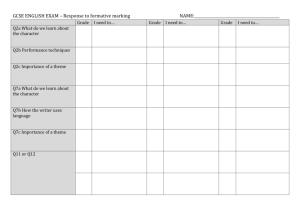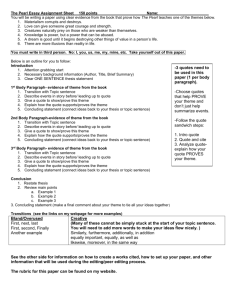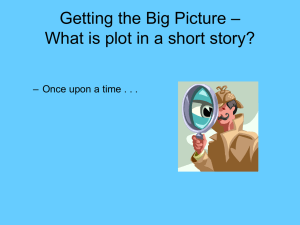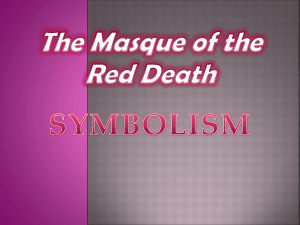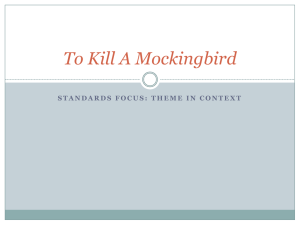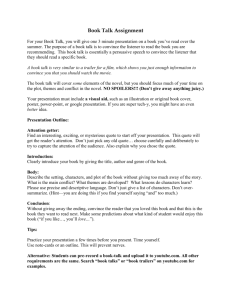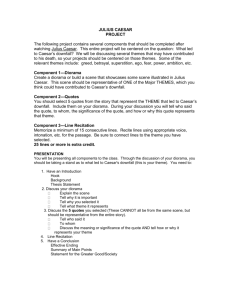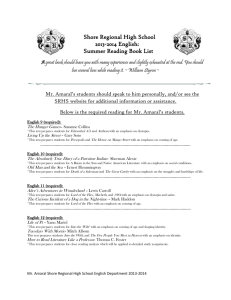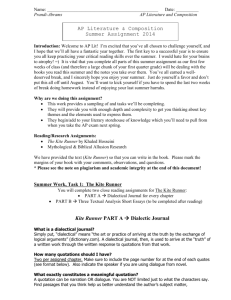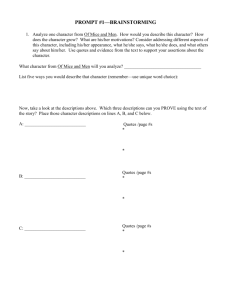SELF CHECKLIST Standards Met Standard
advertisement
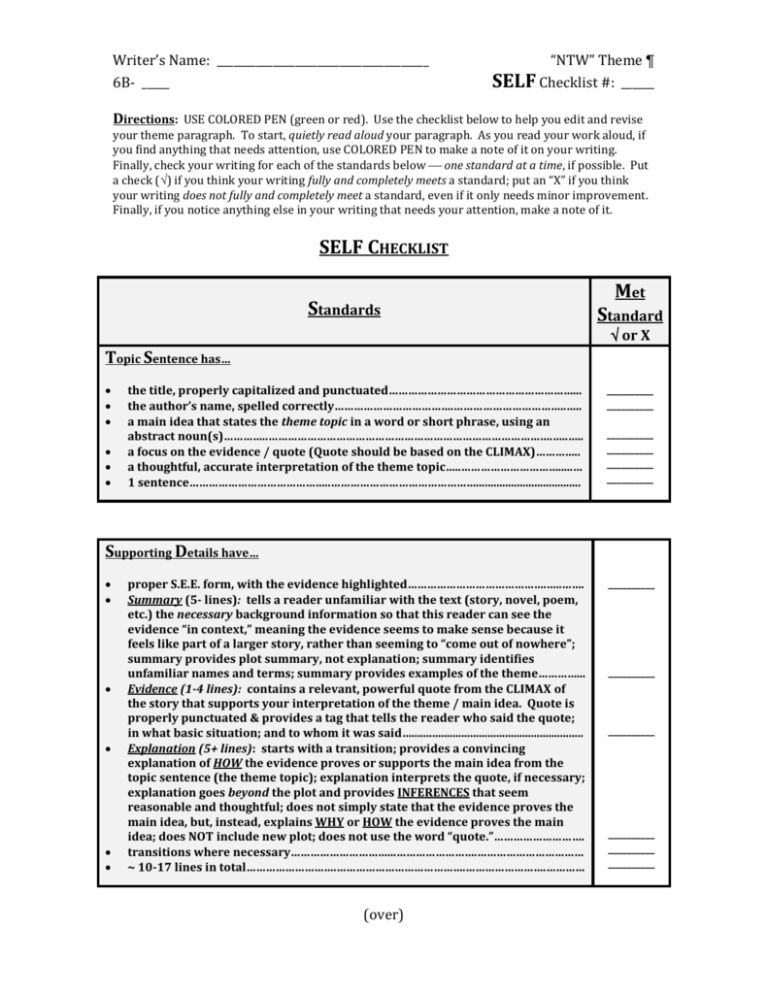
Writer’s Name: ______________________________________ 6B- _____ “NTW” Theme ¶ SELF Checklist #: ______ Directions: USE COLORED PEN (green or red). Use the checklist below to help you edit and revise your theme paragraph. To start, quietly read aloud your paragraph. As you read your work aloud, if you find anything that needs attention, use COLORED PEN to make a note of it on your writing. Finally, check your writing for each of the standards below one standard at a time, if possible. Put a check () if you think your writing fully and completely meets a standard; put an “X” if you think your writing does not fully and completely meet a standard, even if it only needs minor improvement. Finally, if you notice anything else in your writing that needs your attention, make a note of it. SELF CHECKLIST Standards Met Standard or X Topic Sentence has… the title, properly capitalized and punctuated…………………………………………………... the author’s name, spelled correctly……………………………….……………………………..….. a main idea that states the theme topic in a word or short phrase, using an abstract noun(s)…………..…………………………………………………………………………….…..….. a focus on the evidence / quote (Quote should be based on the CLIMAX)………….. a thoughtful, accurate interpretation of the theme topic…..………………………….....… 1 sentence……………………………………..……………………………………….................................... __________ __________ __________ __________ __________ __________ Supporting Details have… proper S.E.E. form, with the evidence highlighted…………………………………….…..……. Summary (5- lines): tells a reader unfamiliar with the text (story, novel, poem, etc.) the necessary background information so that this reader can see the evidence “in context,” meaning the evidence seems to make sense because it feels like part of a larger story, rather than seeming to “come out of nowhere”; summary provides plot summary, not explanation; summary identifies unfamiliar names and terms; summary provides examples of the theme…………... Evidence (1-4 lines): contains a relevant, powerful quote from the CLIMAX of the story that supports your interpretation of the theme / main idea. Quote is properly punctuated & provides a tag that tells the reader who said the quote; in what basic situation; and to whom it was said…........................................................... Explanation (5+ lines): starts with a transition; provides a convincing explanation of HOW the evidence proves or supports the main idea from the topic sentence (the theme topic); explanation interprets the quote, if necessary; explanation goes beyond the plot and provides INFERENCES that seem reasonable and thoughtful; does not simply state that the evidence proves the main idea, but, instead, explains WHY or HOW the evidence proves the main idea; does NOT include new plot; does not use the word “quote.”………………………. transitions where necessary…………………………...…………………….…………………………… ~ 10-17 lines in total……………………….………………………………….…………………….………… (over) __________ __________ __________ __________ __________ __________ Insight Statement has… the 4 main parts, in order: o conclusive transition: ultimately, basically, etc………………………………….….. o text reference: mention the evidence (the CLIMAX) ……………………………... o “springboard”: demonstrates, illustrates, illuminates, reveals, suggests, implies, etc.; not “shows”………………………………………………………...……………... o real-world insight: a general observation or conclusion about life or human nature that is based upon the ideas in the rest of the ¶; a THEME MESSAGE that relates to the theme topic from the topic sentence ….……… a proper real-world insight: o universal: idea is broad and could apply to most people; it is not specific to the particular events of the story or to a small set of people…. o original: idea is stated in original terms; it is not a cliché that has been said many times before and that has lost its power as a result………………. o “softened”: idea is worded to show that life is rarely always or never a certain way; uses “softening” terms like “can,” “in some cases,” “sometimes,” etc.; is not an “absolute” / “24-7” / “black and white” idea.. o observational: idea says how life is sometimes; it does not give advice on how to live a good life; doesn’t tell people what to do or what not to do; is not a moral……………………………………………………………………………………. o thoughtful: idea shows deep thought; it is insightful and thoughtprovoking………………………………………………………………………………………………. 1 sentence……………………………………………………………………………………………..……………. __________ __________ __________ __________ __________ __________ __________ __________ __________ __________ Language has… proper tone (objective)………………………………………………………………………………….…… clear language that is easy to read and understand……………………………………….…… correct use of spelling…………………………………………………………………………………….…... accurate use of commas, quotation marks, periods, question marks, and other punctuation…………………………………………………………………………………….………………..… interesting, sophisticated vocabulary that is formal, not casual…………………………. NO comma splices, run-ons, or fragments…………………………………………………………... varied wording that shows the writer’s ability to start sentences differently and to use different sentence structures, rather than relying on the same wording or structure from sentence to sentence………..…………………………………………………….. consistent use of one verb tense — present — as often as possible……………………. __________ __________ __________ __________ __________ __________ __________ __________ Formatting has… a proper heading: name, date, class, assignment; the heading rests against the sides & the top margin………………………..………………………………………………………………. an extra blank line between the heading and the first line of writing……….………… 12-point font size………………………………..……………………...................................................... a straightforward font style (Times, Times New Roman, Ariel, Helvetica, Gill Sans, Cambria, etc.)………………………………………………………………………………………...….. standard margins: 1” on top & bottom; 1” or 1.25” on sides………………………………. 1 tab-stroke indentation………………………..………………………………..…………………………. line-spacing set at 2; or — if the writing is longer than 1 side of a page — linespacing set at 1.5…………..……………….…………………………………………………………….......... TS, Evidence; IS are highlighted………………………………………………………………………….. __________ __________ __________ __________ __________ __________ __________ __________ 2



